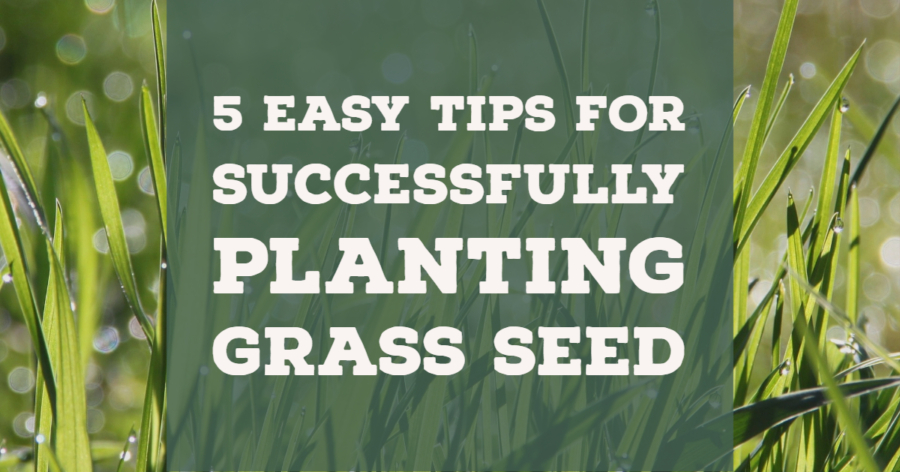TOP 5 Low-Maintenance Grasses and Grass Alternatives
/in Cover Crops, Drought Tolerant, Grass, Low Maintenance, Seeds, Water Conservation/by Danielle Dewey5 Easy Tips for Successfully Planting Grass Seed
/1 Comment/in Grass, Planting, Seed Germination, Seed Starting, Seeds/by Sam Doll
by Sam Doll
Now that fall is nearly upon us, it’s time to start thinking about planting grass seed! Don’t know what you are doing? Don’t worry. We are here to help.
Here are our 5 tips for successfully planting grass seed this season:
1. The Season Matters
While some warm-weather grasses, like bermudagrass, should be planted in early summer, most grasses need mild weather to successfully germinate and survive. Freezes and harsh heat can kill off your baby grass before it has a chance to become established. Late Spring and early Fall, when the soil temperature is between 50 to 80 degrees, is the best time to plant most grass seeds.
2. Find the Right Seed
Find the grass that will suit your lifestyle and location. Some mixes, like our Green Manure and Cool Season Cover Crop, are great for restoring the soil nutrients in your soil. Some, like our Colorado Supreme Turf Grass Mix, are better for heavy foot traffic. Native and drought-tolerant grasses are great for creating a sustainable and low-maintenance landscape. Make sure to consider your soil type, climate, amount of sun, and intended use when picking a grass mix.
We have a wide variety of grass mixes that will suit all your needs.
3. Prepare Your Soil
Once you’ve chosen your site, use a shovel or a sod cutter to remove the existing plants and grass from the area. Remove any debris and rocks you see, till the soil, and fill in any low spots. You want your soil to be broken into pebble-sized particles.
Rake the site to even out the soil and remove small debris. Be careful when bringing in new topsoil to make sure it doesn’t contain unwanted weed seeds.
Optional: You can send a soil sample to your local extension office to have it tested to see if you need any soil amendments. You can find extension offices near you with the help of this tool from GardeningKnowHow.com.
As for pH, you generally want to keep the soil between 6.0 and 7.0.
4. Seed and Fertilize
Once your site is prepped, it’s time for planting your grass seed! Using a drop spreader or a broadcast spreader, spread half the seed lengthwise over your site, then use the other half and spread crosswise over your site. A recommended seeding rate will be listed on the seed tag.
Feeding with starter (weak) fertilizer the same day as you spread seed will provide proper nutrients for early growth and establishment. Make sure the site stays moist, but not soggy, through germination.
5. Maintenance
Different mixes require different maintenance. Generally, once grass reaches 5-6 inches (for turf type), it is recommended to cut it to encourage even growth. Water and fertilize as needed.
We hope these tips will make planting grass seed a breeze for you! If you still have questions or need any other advice, please don’t hesitate to contact us.
ABOUT BBB SEED
BBB Seed is a family-owned business specializing in the distribution of Wildflower Seeds and Native Grasses, Grass Mixes, Turf Grasses, Grass and Wildflower Mixes, Regional Wildflower Seed Mixes, and Special-Use Wildflower Mixes including our line of six great Pollinator Mixes.
GET HELP
Join Our Newsletter
The Dirt
- Low‑Water Lawn Alternatives: Durable, Walkable Options That Beat Thirsty Grass November 10, 2025
- Fast-Growing Grass Seed: The Fastest Germination Picks (and How to Get Results in 7–10 Days) November 10, 2025
- 6 Sustainable Grass Alternatives That Look Fantastic April 24, 2024
- 12 Most Common Types of Grass Weeds in the US – With Pictures April 24, 2024
- The Perfect 19 Plants for Honey Bees March 7, 2024
- How Long Does It Take For Grass Seed To Grow? February 23, 2024

